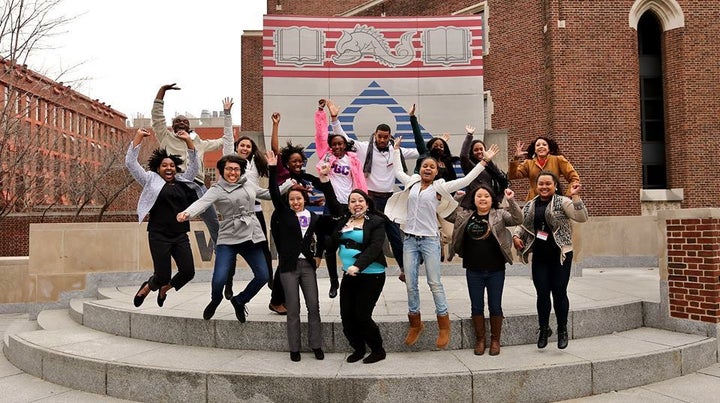
Tyler Hallmark & Marybeth Gasman
Co-authored with Tyler Hallmark (tyha@gse.upenn.edu)
As products of the social media age, most current college students have lived through the evolution of the era – from Friendster to Facebook, Flickr to Instagram. It seems more and more students are politically active online that ever before. Yet, we are left wondering… how can a generation that is so politically active on social media still struggle to be heard in the broader world?
Millennials (aged 18 to 35) now make up 31% of the voting-eligible population. Yet, in 2016, young voters continued the time-worn trend of not showing up to the polls, having only 50% of youth, aged 18 to 29, show up to cast a ballot in November. An analysis of voter turnout in presidential elections shows that this is not a recent trend, and time-and-again, the 18 to 24 age group show up to the polls less than all other age groups. Recognizing that this is a long-term trend, many people conclude that 18 to 24-year-olds are not politically motivated to vote. Voting demonstrates a care for your community and thoughts about your future; younger generations tend to live more in the “now” and may not be truly invested in a community yet. However, rather than say it’s the students’ fault for not caring enough to engage, we argue that certain measures are being taken to keep students away from the polls or, in some cases, the polls away from the students.
Strict voter ID laws have been on the rise in recent years, with many drawing comparisons to the Jim Crow South. In 2016, seven states required photo identification, compared to only four in 2012. In the midst of these voter ID laws, college students in particular face many challenges getting to the polls. Some states, such as Tennessee, have explicitly excluded student IDs as forms of identification, while other states do not accept out-of-state driver’s licenses.
Voter registration further complicates the process for some students. As a first-time voter, some students may be misled by myths about voter registration (such as concerns of financial aid eligibility). Additionally, many students are often unaware if they are eligible to vote under a school address. Many states, such as Wisconsin, have made this even more difficult by disallowing students to use university-provided housing lists to verify their residency. With these registration obstacles in the way, students may be discouraged by the process and never vote at all, especially those students who are relocating from another state.
Perhaps the biggest challenge for students who seek to vote is where they vote. Many colleges and universities struggle to obtain polling sites on-campus. For those colleges and universities that do obtain a polling site, some sites are so crowded that it can take 1-2 hours to cast a ballot – discouraging many students as they do not have the time to wait in line, especially considering their class schedules overlap with voting times. And while early polling locations have been shown to get larger turnout from student populations, many campus polling sites do not offer early voting. In some instances, such as the case of Appalachian State University, some county elections boards have sought to close early voting locations and/or move them farther away from college campuses.
Moving polling locations, even minor distances, can have a large impact on voter turnout. When one combines polling places to cut down on administrative costs, this can increase voter travel time and wait time and, ultimately, reduce voter turnout significantly. This is especially important to consider when looking at polling sites on college campuses – polling sites that are often closed and combined with sites farther away from the campus. One study in Wisconsin showed that college students who had an off-campus polling location made up 5.7% of students casting a ballot compared to 10% for students who had an on-campus polling location.
Voting is very, for lack of a better word, political. Through moving/closing polling sites, implementing complex voter registration laws, and complicating the identification processes, lawmakers and politicians have restrained the voting rights of college students – so much so that despite making up the largest constituent, they vote less than any other age group.
Rather than dwell in these challenges, it’s time that we – students, educators, university administration – fight for students’ rights to vote. You want students to have a voice? It’s time you do something about it. Does your institution have a polling site on campus? If not, you might take a lesson from the University of Virginia, where several student groups worked with the university’s transportation services in order to provide shuttles to and from the polls.
Prairie View A&M University, Texas’ oldest Historically Black University, may also serve as an example of what can happen when students organize and fight for their rights, having earned a polling site in 2013. What would it take to establish a polling site on your campus? Moreover, it’s worth asking yourself… Are students at my institution registered? And what is my institution doing to confront the myths that may plague their decisions to register? Northwestern University has tackled these challenges with the UVote Project, introducing voter registration at freshman orientation and successfully registering more than 90% of their freshman class. Simply said, there’s a lot to be done; Facebook and Twitter posts aren’t enough. Student voices are the voices of the future, and we need to make our best effort to let them be heard.
